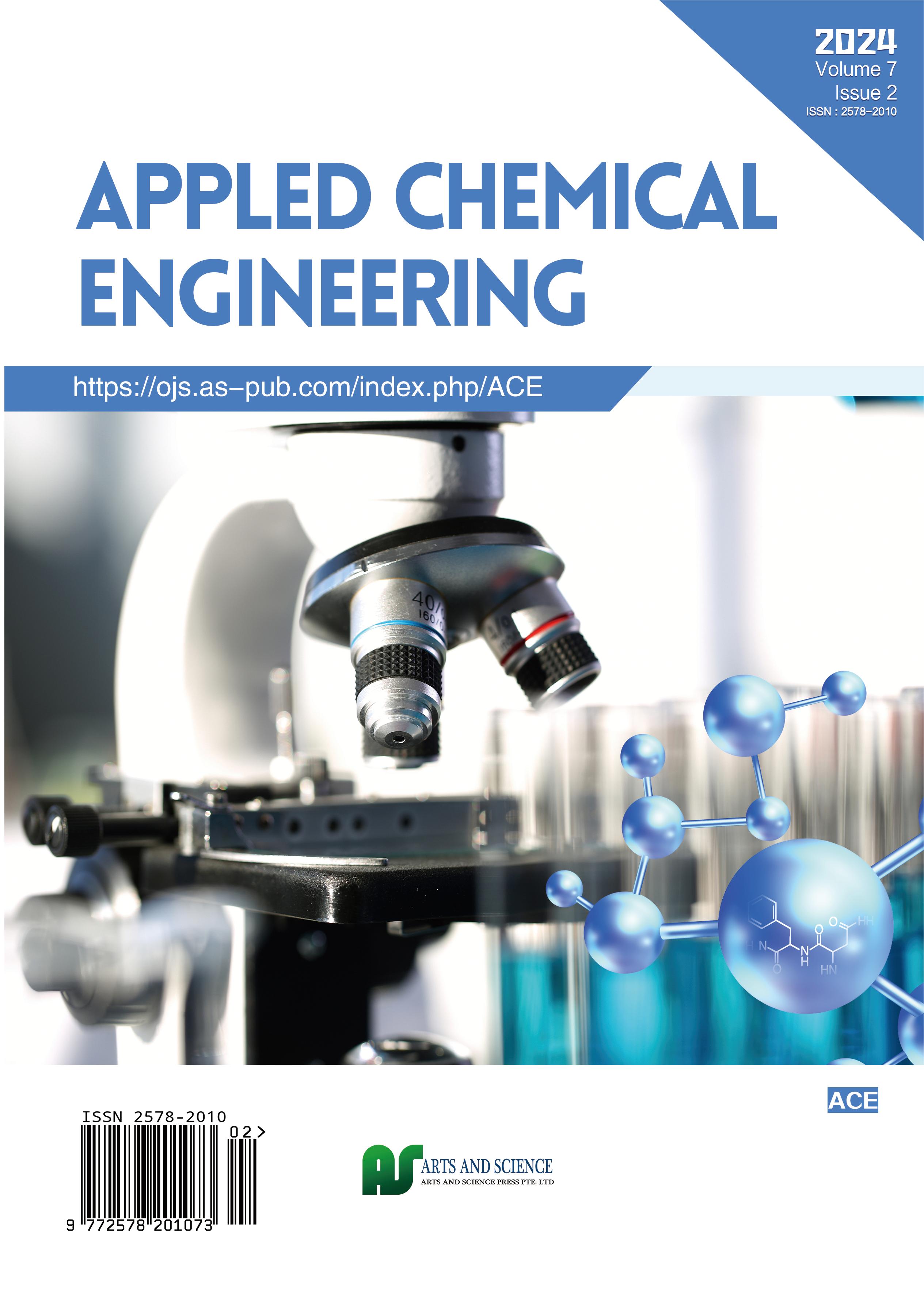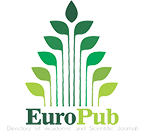
Published
2024-04-15
Issue
Section
Original Research Article
License
Copyright (c) 2024 ROSY PALETTA, Pierpaolo Filippelli, Sebastiano Candamano, Luana Galluccio, Angelo Macilletti, Yessica Castro, Antonio Tursi, Eurípides Amaro, Atilio De Frias

This work is licensed under a Creative Commons Attribution 4.0 International License.
The Author(s) warrant that permission to publish the article has not been previously assigned elsewhere.
Author(s) shall retain the copyright of their work and grant the Journal/Publisher right for the first publication with the work simultaneously licensed under:
OA - Creative Commons Attribution-NonCommercial 4.0 International (CC BY-NC 4.0). This license allows for the copying, distribution and transmission of the work, provided the correct attribution of the original creator is stated. Adaptation and remixing are also permitted.

This license intends to facilitate free access to, as well as the unrestricted reuse of, original works of all types for non-commercial purposes.
How to Cite
Efficient reuse of Sargassum spp. biomass and organic fraction of municipal solid waste by anaerobic co-digestion in the Dominican Republic: evaluation of biochemical methanogenic potential and reaction rates
Rosy Paletta
University of Calabria
Pierpaolo Filippelli
University of Calabria
Sebastiano Candamano
University of Calabria
Luana Galluccio
University of Calabria
Angelo Macilletti
University of Calabria
Yessica A. Castro
Universidad Federico Henriquez y Carvajal, Santo Domingo, Dominican Republic
Antonio Tursi
University of Calabria
Eurípides Amaro
Universidad Federico Henriquez y Carvajal, Santo Domingo, Dominican Republic
J. Atilio de Frias
Universidad Federico Henriquez y Carvajal, Santo Domingo, Dominican Republic
DOI: https://doi.org/10.59429/ace.v7i2.2081
Keywords: Sargassum spp.; organic fraction of municipal solid waste; anaerobic co-digestion; kinetic models
Abstract
Anaerobic digestion (AD) is a potential solution to valorize invasive pelagic Sargassum spp. Sargassum spp. (SP) biomass is characterized by a low carbon/nitrogen (C/N) ratio, which, in addition to the presence of indigestible fiber, sulfide, salt, ash, and polyphenol content, are inhibitors to the AD process. Furthermore, its chemical composition depends on the season and region of harvesting. To increase biogas yields, biomass must be subjected to pre-treatment or an anaerobic co-digestion process with other waste biomass. In this paper results of co-digestion of Sargassum spp. and municipal solid waste (OFMSW) batches with different weight ratios are reported and compared with the mono-digestion of the two organic matrices. The objective is to provide an optimized SP to OFMSW ratio for the sustainable production of biogas in the Dominican Republic. Mono-digestion of Sargassum spp. showed the longest reaction time and the lowest biomethane yield as it lasted 30 days and provided a cumulative volume of biomethane equal to 79.68 NmLg−1VS. The addition of OFMSW led to the shortening of the reaction time to 10 days and to the increase of the yield and cumulative volume of biomethane. It can be attributed to the more favorable C/N ratio, to the presence of more readily digestible compounds and lower ash content of those batches. The reaction kinetics of all the investigated batches is properly fitted by the Modified Gompertz model. The system with a Sargassum spp.-OFMSW weight ratio of 33:67 allows to obtain a notable bio-methane volume of 327.27 ± 15.93 NmLg−1VS, ten times higher than from Sargassum spp. alone.
References
[1]. Angelidaki I, Ellegaard L, Ahring BK. Applications of the anaerobic digestion process. Adv. Biochem. Eng. Biotechnol. 2003, 82: 1–33.
[2]. Calbry-Muzyka A, Madi H, Rüsch-Pfund F, et al. Biogas composition from agricultural sources and organic fraction of municipal solid waste. Renewable Energy. 2022, 181: 1000-1007. doi: 10.1016/j.renene.2021.09.100
[3]. Appels L, Baeyens J, Degrève J, et al. Principles and potential of the anaerobic digestion of waste-activated sludge. Progress in Energy and Combustion Science. 2008, 34(6): 755-781. doi: 10.1016/j.pecs.2008.06.002
[4]. Merlin G, Boileau H. Anaerobic digestion of agricultural waste: state of the art and future trends. Anaerobic digestion: types, processes and environmental impact. Nova Science Publishers; 2013.
[5]. Macias-Corral M, Samani Z, Hanson A, et al. Anaerobic digestion of municipal solid waste and agricultural waste and the effect of co-digestion with dairy cow manure. Bioresource Technology. 2008, 99(17): 8288-8293. doi: 10.1016/j.biortech.2008.03.057
[6]. Li Y, Han Y, Zhang Y, et al. Anaerobic digestion of different agricultural wastes: A techno-economic assessment. Bioresource Technology. 2020, 315: 123836. doi: 10.1016/j.biortech.2020.123836
[7]. Monroy O, Fama G, Meraz M, Meraz M, et al. Anaerobic digestion for wastewater treatment in Mexico: state of the technology. Water Research. 2000. 34(6): 1803-1816.
[8]. McKennedy J, Sherlock O. Anaerobic digestion of marine macroalgae: A review. Renewable and Sustainable Energy Reviews. 2015, 52: 1781-1790. doi: 10.1016/j.rser.2015.07.101
[9]. Akila V, Manikandan A, Sahaya Sukeetha D, et al. Biogas and biofertilizer production of marine macroalgae: An effective anaerobic digestion of Ulva sp. Biocatalysis and Agricultural Biotechnology. 2019, 18: 101035. doi: 10.1016/j.bcab.2019.101035
[10]. AP Y, Farghali M, Mohamed IMA, et al. Potential of biogas production from the anaerobic digestion of Sargassum fulvellum macroalgae: Influences of mechanical, chemical, and biological pretreatments. Biochemical Engineering Journal. 2021, 175: 108140. doi: 10.1016/j.bej.2021.108140
[11]. Wang M, Hu C, Barnes BB, et al. The great Atlantic Sargassum belt. Science. 2019, 365(6448): 83-87. doi: 10.1126/science.aaw7912
[12]. Lopresto CG, Paletta R, Filippelli P, et al. Sargassum Invasion in the Caribbean: An Opportunity for Coastal Communities to Produce Bioenergy Based on Biorefinery—An Overview. Waste and Biomass Valorization. 2022, 13(6): 2769-2793. doi: 10.1007/s12649-021-01669-7
[13]. van Tussenbroek BI, Hernández Arana HA, Rodríguez-Martínez RE, et al. Severe impacts of brown tides caused by Sargassum spp. on near-shore Caribbean seagrass communities. Marine Pollution Bulletin. 2017, 122(1-2): 272-281. doi: 10.1016/j.marpolbul.2017.06.057
[14]. Acid A, Milledge JJ, Maneein S, et al. Sargassum Inundations in Turks and Caicos. Methane; 2020.
[15]. Fan YV, Klemeš JJ, Lee CT, et al. Anaerobic digestion of municipal solid waste: Energy and carbon emission footprint. Journal of Environmental Management. 2018, 223: 888-897. doi: 10.1016/j.jenvman.2018.07.005
[16]. Thompson TM, Young BR, Baroutian S. Enhancing biogas production from caribbean pelagic Sargassum utilising hydrothermal pretreatment and anaerobic co-digestion with food waste. Chemosphere. 2021, 275: 130035. doi: 10.1016/j.chemosphere.2021.130035
[17]. Oliveira JV, Alves MM, Costa JC. Optimization of biogas production from Sargassum sp. using a design of experiments to assess the co-digestion with glycerol and waste frying oil. Bioresource Technology. 2015, 175: 480-485. doi: 10.1016/j.biortech.2014.10.121
[18]. Rivera-Hernández Y, Hernández-Eugenio G, Balagurusamy N, et al. Sargassum-pig manure co-digestion: An alternative for bioenergy production and treating a polluting coastal waste. Renewable Energy. 2022, 199: 1336-1344. doi: 10.1016/j.renene.2022.09.068
[19]. Prakoso T, Rustamaji H, Yonathan D, et al. The Study of Hydrothermal Carbonization and Activation Factors’ Effect on Mesoporous Activated Carbon Production From Sargassum sp. Using a Multilevel Factorial Design. Reaktor. 2022, 22(2): 59-69. doi: 10.14710/reaktor.22.2.59-69
[20]. Paletta R, Candamano S, Filippelli P, Lopresto CG. Influence of Fe2O3 Nanoparticles on the Anaerobic Digestion of Macroalgae Sargassum spp. Processes. 2023, 11(4): 1016. doi:10.3390/pr11041016.
[21]. Sluiter, A. et al. Determination of total solids in biomass and total dissolved solids in liquid process samples. National Renewable Energy Laboratory; 2008. pp. 3–5.
[22]. Mohamed MA, Nourou D, Boudy B, et al. Theoretical models for prediction of methane production from anaerobic digestion: A critical review. International Journal of Physical Sciences. 2018, 13(13): 206-216. doi: 10.5897/ijps2018.4740
[23]. Campuzano R, González-Martínez S. Characteristics of the organic fraction of municipal solid waste and methane production: A review. Waste Management. 2016, 54: 3-12. doi: 10.1016/j.wasman.2016.05.016
[24]. Sailer G, Eichermüller J, Poetsch J, et al. Characterization of the separately collected organic fraction of municipal solid waste (OFMSW) from rural and urban districts for a one-year period in Germany. Waste Management. 2021, 131: 471-482. doi: 10.1016/j.wasman.2021.07.004
[25]. Awasthi MK, Pandey AK, Bundela PS, et al. Co-composting of organic fraction of municipal solid waste mixed with different bulking waste: Characterization of physicochemical parameters and microbial enzymatic dynamic. Bioresource Technology. 2015, 182: 200-207. doi: 10.1016/j.biortech.2015.01.104
[26]. Montingelli ME, Tedesco S, Olabi AG. Biogas production from algal biomass: A review. Renewable and Sustainable Energy Reviews. 2015, 43: 961-972. doi: 10.1016/j.rser.2014.11.052
[27]. Derba K, Bencheikh-Lehocine M, Meniai AH. Study of Biodegradability of Organic Fraction of Municipal Solids Waste. Energy Procedia. 2012, 19: 239-248. doi: 10.1016/j.egypro.2012.05.203
[28]. Rodríguez A, Ángel J, Rivero E, et al. Evaluation of the Biochemical Methane Potential of Pig Manure, Organic Fraction of Municipal Solid Waste and Cocoa Industry Residues in Colombia. Chemical Engineering Transactions; 2017. pp. 55-60.








